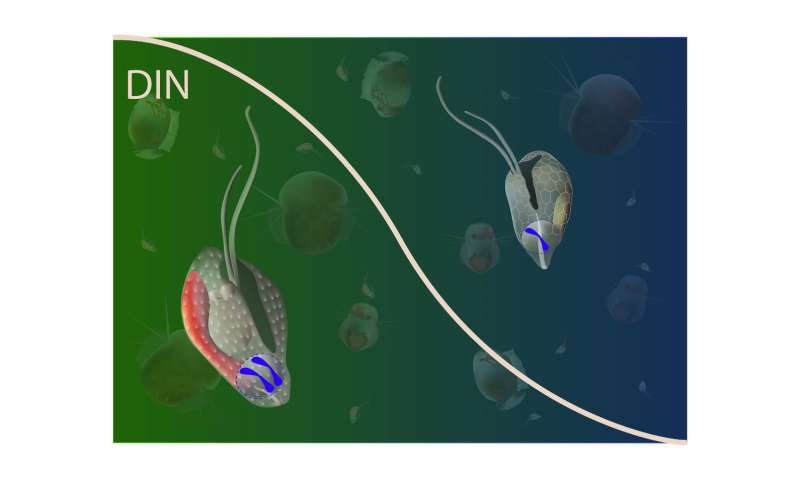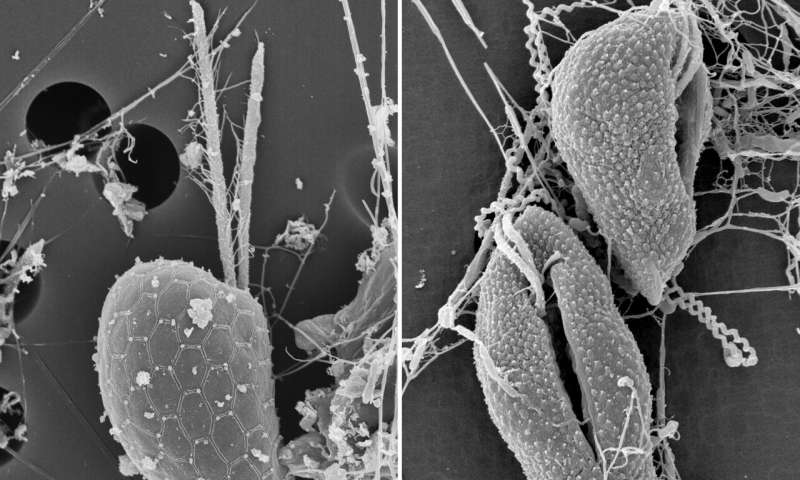Species of algae found able to have dimorphic sexual life cycles
by Bob Yirka
A team of researchers from Norway, Sweden and Denmark has found a species of algae (Teleaulax amphioxeia) that has dimorphic sexual life cycles. In their paper published in the journal Science Advances, the group describes how their accidental discovery of the unique attributes of the algae and what they learned when they took a closer look.
When a creature has dimorphic sexual life cycles, it means it reproduces differently depending on its life cycle. The cryptophyte algae the researchers were studying is able to switch between a haploid (an organism with a single set of chromosomes) and a diploid (an organism with a matched pair of chromosomes). Prior to their discovery, this single species was thought to be two different species. The other had been named Plagioselmis prolonga.
The researchers made their discovery accidentally. They had collected some samples of the algae and kept them in a jar overnight. When they returned, they found that the algae had somehow turned into another species. A close look at their DNA showed that they were actually the same species—one that was capable of changing dramatically to suit environmental conditions.
The researchers found the algae existed in its single chromosome form when there were plenty of nutrients in its environment (most particularly, nitrogen). But when things grew sparse, the algae simply shifted to it dual chromosome form. Notably, haploids reproduce asexually, while diploids reproduce sexually. The researchers suggest the ability to switch between the two forms allows the algae to survive in a host of different environments, which could help explain its success as a species (they are found in all of the oceans), though they do not know yet if the algae can reproduce in both of its forms.
Study of the algae showed it cloned its genetic material when shifting to a diploid, and destroyed the copy when shifting back to a haploid. They also found that in the ocean, the algae tended to shift between forms seasonally. They were most often found in their diploid form during the winter when nutrients were scarcer.

More information: A. Altenburger et al. Dimorphism in cryptophytes—The case of Teleaulax amphioxeia/Plagioselmis prolonga and its ecological implications, Science Advances (2020). DOI: 10.1126/sciadv.abb1611
Journal information: Science Advances
© 2020 Science X Network